Agitus AG640 AG640HA AG640MF AG660 AG660HA AG660MF- Office Furniture and Chair Manufacturer Senator International

Agitus AG640 AG640HA AG640MF AG660 AG660HA AG660MF- Office Furniture and Chair Manufacturer Senator International |
|
|---|---|
 |
|
|
Agitus Office Chair Agitus has been carefully conceived to provide a
|
||||||||||||||||||||||||
|---|---|---|---|---|---|---|---|---|---|---|---|---|---|---|---|---|---|---|---|---|---|---|---|---|---|
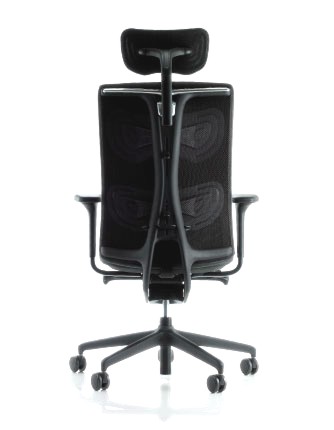 |
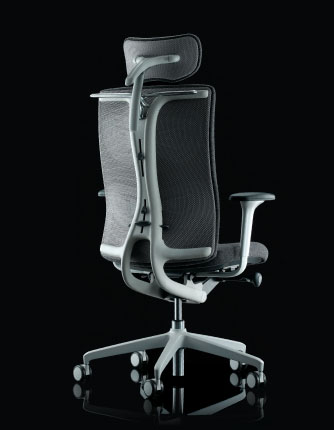 |
||||||||||||||||||||||||
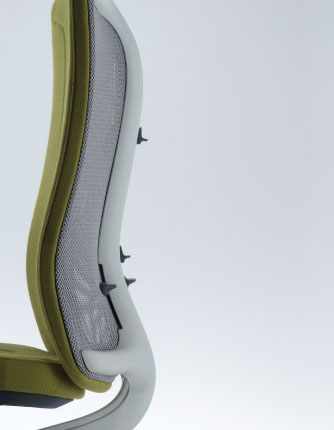 |
Movement is preferred to a static posture as movement pumps nutrients into the spine and promote good health as the spine has no independent circulatory supply. Maintaining a neutral relaxed posture is key. Sitting upright holding the ‘S’ shape of our spines all day long, unsupported, is not possible and in most workers today we see ‘C’ shaped spinal posture at the end of the day. Today most seating designs predominate upon orientational support for the Pelvis and provide dimensional adjustment for the Lumbar primarily in terms of height but also to a rigid fixed depth. Most chairs today seek to cater for 90% but in truth get closer to only 80% of the working population with dimensional options focussed upon the seat, lumbar region and the arms, beyond this it is more often the aesthetic considerations that guide the design of the upper back profile. Historically chairs being constructed utilising structural plastics and moulded foams and more latterly with rigid frames with mesh type materials stretched across them these materials tend to ‘hammock’ providing little intentional support. Throughout Northern America and Central Europe the synchronous mechanism in its various guises is widely acknowledged as being the most suitable solution however most users struggle to adjust the tilt tension effectively to balance the chair or ignore this adjustment and revert to locking the action negating the benefits of the synchronous tilt. Few chairs provide any adjustable specific dimensional support for the Thoracic region of the spine. Few chairs provide any effective dimensional support for the Cervical spine as most headrests available today serve as status symbols rather than be functionally effective. Research has shown individuals using VDT prefer to work in a semi reclined posture in a range up to 10° from vertical. Unsupported this causes a flattening of the upper spine and tension in the shoulder and neck muscles. The build up of heat in the muscles and tissue’s surrounding sitting bones (ischial tuberosity) and the muscles surrounding the back leads to discomfort but more importantly restricts the flow of nutrients and causes fatigue and can lead to more long term health issues. |
||||||||||||||||||||||||
|
|
|
|||||||||||||||||||||||
Ergonomics is not an exact science and it is not a surprise that Ergonomists don’t agree on much; however constants are that the spine has four principle curves (cervical, thoracic, lumbar and pelvic) which form the holy grail of the ‘S’ shaped spine. |
 |
Human beings are not designed to sit, so to do so for long periods is a challenge. |
|||||||||||||||||||||||
| Movement is preferred to a static posture as movement pumps nutrients into the spine and promote good health as the spine has no independent circulatory supply. Maintaining a neutral relaxed posture is key. Sitting upright holding the ‘S’ shape of our spines all day long, unsupported, is not possible and in most workers today we see ‘C’ shaped spinal posture at the end of the day. Today most seating designs predominate upon orientational support for the Pelvis and provide dimensional adjustment for the Lumbar primarily in terms of height but also to a rigid fixed depth. Most chairs today seek to cater for 90% but in truth get closer to only 80% of the working population with dimensional options focussed upon the seat, lumbar region and the arms, beyond this it is more often the aesthetic considerations that guide the design of the upper back profile. Historically chairs being constructed utilising structural plastics and moulded foams and more latterly with rigid frames with mesh type materials stretched across them these materials tend to ‘hammock’ providing little intentional support. Throughout Northern America and Central Europe the synchronous mechanism in its various guises is widely acknowledged as being the most suitable solution however most users struggle to adjust the tilt tension effectively to balance the chair or ignore this adjustment and revert to locking the action negating the benefits of the synchronous tilt. Few chairs provide any adjustable specific dimensional support for the Thoracic region of the spine. Few chairs provide any effective dimensional support for the Cervical spine as most headrests available today serve as status symbols rather than be functionally effective. Research has shown individuals using VDT prefer to work in a semi reclined posture in a range up to 10° from vertical. Unsupported this causes a flattening of the upper spine and tension in the shoulder and neck muscles. The build up of heat in the muscles and tissue’s surrounding sitting bones (ischial tuberosity) and the muscles surrounding the back leads to discomfort but more importantly restricts the flow of nutrients and causes fatigue and can lead to more long term health issues. | |||||||||||||||||||||||||
|
|
Deisig Design Studio
|
The Solution
|
||||||||||||||||||||||
 |
 |
||||||||||||||||||||||||
The Seat When we sit, good posture begins with a correctly orientated pelvis. To achieve this Agitus works on several levels simultaneously. The seat is linked to the mechanism via a die-cast aluminium frame. This delivers a solid foundation and enables the under seat area to have an open aspect. A structural seat membrane is mounted to the frame which has been developed to be flexible and promote correct positioning on the seat. The deliberate human pattern provides fantastic comfort irrespective of the proportions of the user and also enables the seat to breath and enhances the dissipation of heat from within the seat. Dual density moulded foams further enhance the posture of the pelvis throughout the recline motion. Where needed the selectable negative tilt can be used to accentuate the positive rotation of the pelvis. Dimensional positioning is provided with seat depth adjustment fore and aft that can be easily achieved from a seated position.
|
The Back The organic form of the flexible structural back frame hosts some of the key innovations of Agitus with two independently adjustable flexible panels supporting both the Lumbar and Thoracic regions of the spine. These panels are centrally mounted upon spring blades which allow them to pivot and flex as the user moves in the chair. They are adjustable for height and depth and as such provide an unparalleled level of dimensional flexibility when compared to conventional rigid structures typical in seating design. They act as a form of suspension once set and have the ability to extend and retract which compensates for the way the curvature of the spine changes as we recline, promoting the lordotic curvature of the Lumbar region and supporting the kyphotic curve of the Thoracic region simultaneously. The upholstery package which covers the panels has being conceived to telegraph these changes and flexibility through to the user. The contoured moulded foam cushion sits directly onto the panels and is secured to a flexible perimeter frame which facilitates the change in form and alignment to the user, it flexes and the profile changes to correspond to the change in the user as the chair reclines back and forward. The open aspect of this package allows the upholstery to breath preventing the accumulation of heat that is typical in traditionally upholstered chairs. Meticulous selection of the materials which form the back structure, deliberately provide dynamic flexibility without sacrificing any strength. |
||||||||||||||||||||||||
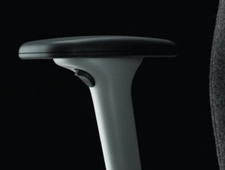 |
 |
||||||||||||||||||||||||
The Arms Key to effective relaxed support of the upper body are the design, positioning and function of the arm rests. The arms of Agitus are securely mounted directly to the aluminium under seat frame. This provides phenomenal rigidity and also ensures that the arms retain their dimensional integrity in relation to the back of the chair irrespective of how the seat depth is adjusted, and by virtue of their interrelation to the seat, alignment to the desk surface is maintained throughout the recline motion. Height adjustment comes as standard with the option of an innovative multifunctional arm pad, whose activation trigger is concealed within the inside of the pad design itself. This affords both width and depth adjustment simultaneously and will lock in the users preferred position. The generously proportioned soft arm pad is a fitting resolution to such a superb arm design. |
The Mechanism The engine which drives the chair. It’s progressive synchronised action featuring a 2.6:1 ratio between the back and seat tilt action respects the natural pivoting motion of the human form to give a truly harmonious synchronised action. The symmetry of the control stalks have been intuitively designed with the trilobal design intended to provide ease of use. Each control has a unique purpose which is clearly identified with pictograms indicating its intended function. The Agitus mechanism features a four stage travel limiter with an upright lock and 3 preset recline ranges of 8°, 16°, and 26°. The inclusion of this function is designed to encourage perpetual synchronised movement as opposed to a fixed tilt lock. This function is further enhanced by the provision of a high geared tension adjustment which delivers it’s total range of adjustment in just 9 full revolutions. To further enhance postural support the inclusion of a selectable 3° negative tilt is standard. |
||||||||||||||||||||||||
The Headrest Unlike most other headrests available today which offer more to status than performance, the headrest of Agitus provides fantastic reliable functional adjustment. Its purpose being to effectively support the cervical spine whilst the user reclines thus cradling the head enabling the correct orientation towards the VDT and eradicating stress in the shoulder and neck muscles. The headrest is manually adjusted for height and depth whist its spring mounted upholstered panel automatically orientates to the user and flexes in use. |
|||||||||||||||||||||||||
| Agitus Adjustability | |||||||||||||||||||||||||
Thoracic Panel Adjustment The Thoracic panel can be adjusted for position and performance. using the lower controls either side of the back frame you can adjust the height of the thoracic panel to reflect the corresponding region of your back. The depth and tension of the panel can then be tuned to suit your needs using the smaller control that is situated directly behind the upper back panel. |
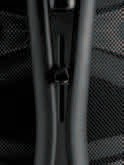 |
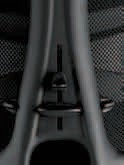 |
Lumbar Panel Adjustment The Lumbar panel can be adjusted for position and performance. using the lower control in the centre of the back frame you can adjust the height of the lumbar panel to reflect the corresponding region of your back. The depth and tension of the panel can then be tuned to suit your needs using the smaller control directly above the height adjustment control. |
||||||||||||||||||||||
Headrest Adjustment The headrest is manually adjusted for height by lifting or lowering the whole headrest On the underside of the support arm there is a small button that when depressed allows the depth of the headrest panel to be adjusted. The panel should ideally sit just at the back of your head against your neck. The spring mounted upholstered panel automatically orientates to the user and flexes in use. |
 |
Mechanism Movement The chair features a four stage travel limiter that has preset ranges of recline using trilobal control on the left hand side of the chair you can select upright lock and 3 preset recline ranges of 8°, 16°, and 26°. Negative Seat Tilt To achieve three degree negative tilt of the seat and back, lift the lever in front of the backrest angle adjustment lever recline in the chair and the mechanism sets to a negative tilt position, reverse to return to standard position. |
|||||||||||||||||||||||
Seat Depth Adjust depth of seat by lifting the lever on the right hand side just under the seat. With back in contact with the backrest allow at least three fingers distance the front of the seat to the back of the legs |
 |
 |
Seat Height Adjust the seat height using the lever under the seat on the right. The hips should be slightly higher than the knees with feet flat on the floor. Mechanism Tension 1 Pressure of the backrest can be varied to suit the user by using the trilobal control located next to the height adjustment lever on the right hand. 2 The control is pulled out and then can be wound clockwise or anti-clockwise to increase or reduce pressure. |
||||||||||||||||||||||
Headrest Adjustment The headrest is manually adjusted for height by lifting or lowering the whole headrest On the underside of the support arm there is a small button that when depressed allows the depth of the headrest panel to be adjusted. The panel should ideally sit just at the back of your head against your neck. The spring mounted upholstered panel automatically orientates to the user and flexes in use. |
Height Adjustable Arms (HA & MF Models) Arm height may be adjusted using the trigger situated under the front of the arm pad. Set the arm height so that your elbows rest gently on the pad and your shoulders are relaxed. Multi Functional Arm Pad (MF Models) When fitted, a button situated in the inner side of the arm pad is depressed and held in to allow you to adjust the width of the arms or forwards and backwards to allow the user to get closer to the desk releasing the button locks the position of the arm pad in the desired position |
||||||||||||||||||||||||
| Download PDF file here | |||||||||||||||||||||||||
| Click here to view a range of Chair Fabrics from the Leather and Camira Range | |||||||||||||||||||||||||
Senator Office Furniture Supplier in Aberdeen UK |
|||||||||||||||||||||||||